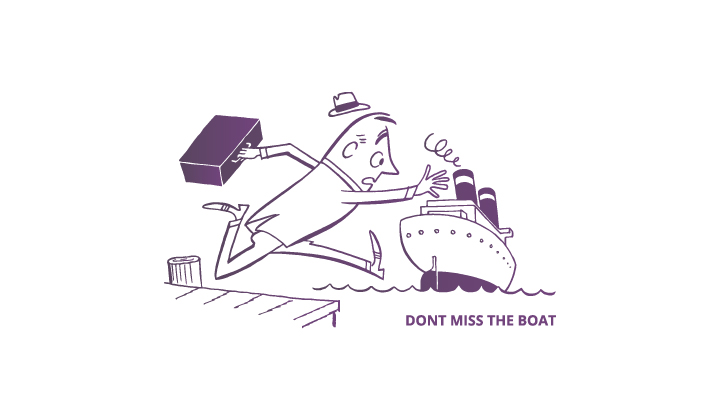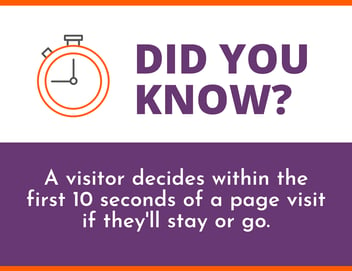Traditional Website Design Is Broken
We've all been here before. You've just spent the last six months working with your marketing team or website designer, and your website is ready to launch. You're happy with the design, I mean it looks awesome, but for some reason it still isn't converting.
So you decide to reach out to an expert in Marketing Strategy, hoping to find a cure so your new website can start producing some valuable ROI for your business. And, the first thing they suggest, "let's redesign the site".
This pit begins to develop in your stomach, you begin to question whether you just wasted the last 6 months and you are out of pocket several thousand (in some cases hundreds of thousands) dollars. This sour taste in your mouth begins to form, and you lose faith in what marketing can offer your business. The worst part, this cycle continues every few years. Every time you engage a new vendor, they tell you that you need a new website.
Doesn't seem fair does it? How will you get ahead if you keep having to go back to the beginning and start all over again?
This my friends, is exactly what the problem is with traditional website design, and I'm going to offer you a new way to look at building a high performance website that generates leads, aids in customer acquisition and fosters customer engagement.
But, before I can get into the offer, I need to spend a moment to talk about what is traditional website design, and how the model is broken.
What is Traditional Website Design
Honestly, traditional website design is what you already know and have experienced with websites. The traditional approach takes on average about 6+ months to design, develop and deploy. Not only, do you wait for the design to be completed before attempting to creating compelling copy that sells your vision.
You are gun shy, and begin holding off on running campaigns until the "new site" is up, and therefore your lead generation engine has basically ground to a halt. You've essentially shut your doors to the public while performing a remodel.
Once your digital masterpiece is ready, you wait a few weeks for your development team to begin adding the copy to your site, and this process feels like it takes forever. You just want to get in there and start updating it.
By the time the website launches, your copy and assets for your website have become outdated or irrelevant. Now you are in a mad panic to get it up-to-date.
Doesn't this experience reek of frustration, pain, and burnout?
The Traditional Model is Broken
If you've made it this far, you're likely experiencing some form of the example above. And, I want you to know I truly get why you are frustrated. This model of development is completely and utterly broken.Here are some cons to the traditional model:
- Website is built in a bubble for six or more months – you are not building to the current landscape of your audience.
- Website is built using best guesses – you've been in a bubble for six months... your market has likely changed or adapted, you've missed the boat and you're making guesses to what your audience wants and needs.
- Website is a High-Risk Investment – honestly this is a big one, you've invested a large portion of your businesses cash flow in an upfront investment that will take an additional three to six months to start "working" for you from the date of launch.
- Late or Over Budget – more often than not, projects that have a longer timeline tend to run late and often come in way over budget. Which often times leads to scope creep due to stakeholders mindset changes.
- Unpredictable Results – the entire website was built on assumptions and the latest trends. How does this actually serve your audience? How are you solving their problems with the latest shiny object? None of the decisions were based on data, you know, how your customers actually use your content.
- Launched, but left never optimized – just because the site is live, doesn't mean there isn't opportunity to improve.
It's easy to see how risky this traditional model can get, and I want you to realize that you will likely fall into this process every three to five years when managing your business' marketing and website.
Now, I'm sure you're saying "Okay... I get it... but what is the solution Richard?".
While there are many methodologies out there, we like to take an agile approach to website development. We subscribe to the principles of Growth-Driven Design, and we believe this methodology solves many of the problems with traditional website design.
What is Growth Driven Design?
Growth-Driven Design (a.k.a GDD) embraces agile methodologies and focuses on developing a data-driven website that is built with adaptability and flexibility from the onset.
One of the principle beliefs behind this approach hinges on mitigating the risk associated with designing a website that leverages popular trends and decisions that are, ultimately, based on unproven or uneducated guesses. Simply put, a brochure website.
GDD IS BASED ON THREE CENTRAL PILLARS:
- Minimize risk – let the data inform and drive ongoing design decisions
- Continuously learn and improve – sites are not static and design can be dynamic based on data
- Inform marketing and sales – take findings from the design process and leverage them within marketing + sales initiatives
The end result, is a website that is continuously evolving and is built in stages according to assumptions that are validated or invalidated based on data.
Features are rolled out in a manner that both inform and are informed by experiences and learning from your marketing and sales teams.
This approach increases the potential impact that your website can have on business objectives, such as lead generation, and minimizes the risk inherent to a traditional website redesign.
Dont Miss the Boat
You can always have a great website. With the right messaging, the right strategy, and the right design, it can be perfect. However, our world is fast paced. It changes frequently, the desires of our audiences change faster than ever and if we want to continue to serve those audiences we need to be listening to what they are saying.
Let me say that again... We need to be LISTENING to what they are SAYING. If you're stuck in a 6+ month development cycle, you have lost an opportunity to adapt and provide a solution NOW.
The model of Traditional Website Design will continue to plague your marketing efforts. Whereas Growth-Driven Design, will have you up and running in a short period of time, focusing on what really matters to your audience. You can begin to focus your marketing efforts with laser focus, and start collecting on that immediate ROI.
If you are stuck in a long cycle website redesign, and just don't know where to go next, let's have a conversation about Growth-Driven Design and how it can move our launch date closer to the current date.
Article by Richard Walsh
As a certified inbound and content marketer, Richard believes in the need to create high-quality compelling content, that drives engagement and interaction. Richard has been developing brands and high-quality web experiences since 2001. Book a meeting with Richard to talk about your branding and marketing efforts.







